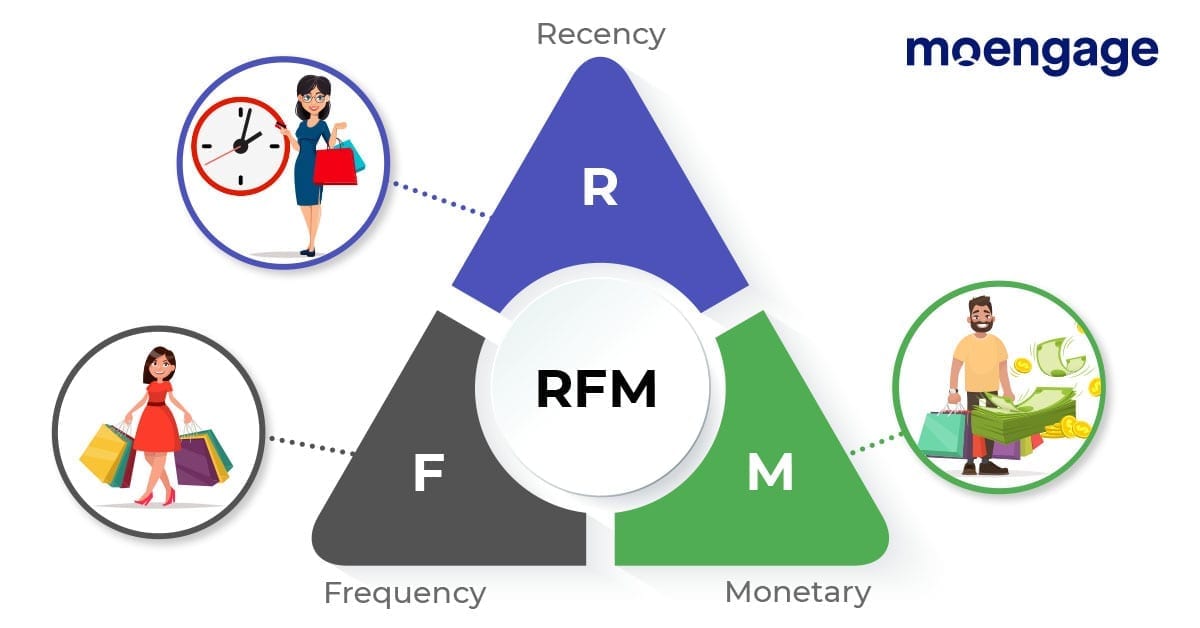Revolutionizing Customer Segmentation with RFM: The New Science of Personalization

Reading Time: 3 minutes
Introducing: A new data-driven way of user segmentation
Great customer engagement requires the right mix of art and science. There are days when you’re crafting creative campaigns that inspire action. Then there are times when you put on your analytical hat and crunch data.
The best marketers and product managers transition between the two in a fluid loop, rather than looking at them as discrete tasks. In order to speed up the feedback loop, last year we launched MoEngage Analytics. This brought insights into your customers and the ability to act on them, in one place.
Now, we want you to take the analysis a step further and apply it to user segmentation.
Why another method of segmenting customers?
User Segmentation, as we know it, is flawed.
For a process that’s critical for providing a relevant and personalized user experience, segmentation is still done manually. It’s typically based on hunches and guesswork and doesn’t take advantage of the vast amounts of user behavior data you collect.
This manual rule-based segmentation also runs the risk of adding some customers to multiple overlapping segments, which can potentially lead to chaos as your user base grows. It might also leave out some of your customers who might not fall into any of the segments–leading to lost opportunities.
How do RFM Segments work?
The RFM Segments module complements the existing segmentation method with behavioral data. It takes into account the Recency, Frequency, and Monetary value (also called RFM analysis) to create user segments.
Here’s RFM analysis in a nutshell:
RFM Segments are actionable, which means that you can:
- Target users with tailored campaigns right from the RFM screen
- Or create a dynamic segment to run campaigns in the future (where users will be segmented at run-time)
Here’s a cheat sheet for engaging these segments:
- Champions: Reward these customers. They promote your products, and they can be early adopters of your new launches.
- Loyal Customers: These customers are responsive to your promotions. Suggest higher-value products to them. Also, leverage them for reviews.
- Potential Loyalists: Engage them with long-term offers like loyalty programs or membership rewards. Suggest other categories of products to them.
- Recent Users: For new users, make their onboarding experience smooth and provide assistance when needed.
- Promising: Convert them into loyal customers by creating brand awareness and giving free trials.
- Needs Attention: You need to bring back these customers. Provide limited-period offers and recommend products based on their purchase history.
- About to Sleep: Swoop in before you lose them. Recommend popular products and provide membership discounts. Reactivate them as soon as possible.
- Price-sensitive: These are users looking for the best deal. Recommend the highest-rated products and send discount communication.
- Can’t Lose Them: Listen to their feedback, suggest newer products, and make them stick to your platform.
- Hibernating: Recommend relevant products from other categories and provide personalized offers.
- Lost: Make your presence felt through different campaigns and try to win them back. Also, send them a personalized survey to collect valuable feedback.
Bonus Content
|
What does it mean for User-defined Segments?
As marketers and product managers, you know aspects of your customers better than most algorithms. An RFM analysis is by no means a replacement for the qualitative insights that you’ve acquired over time.
You’ll still be able to define segments based on rules from the ‘Segmentation’ module. What we’re recommending is a hybrid approach where you analyze the broad user base with RFM Segments. And when you need to go a lot deeper, you can create nuanced segments that are rich and highly targeted.
Simply put, you get the best of both worlds.
| Here’s What You Can Read Next: |







